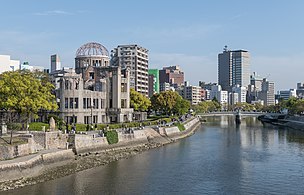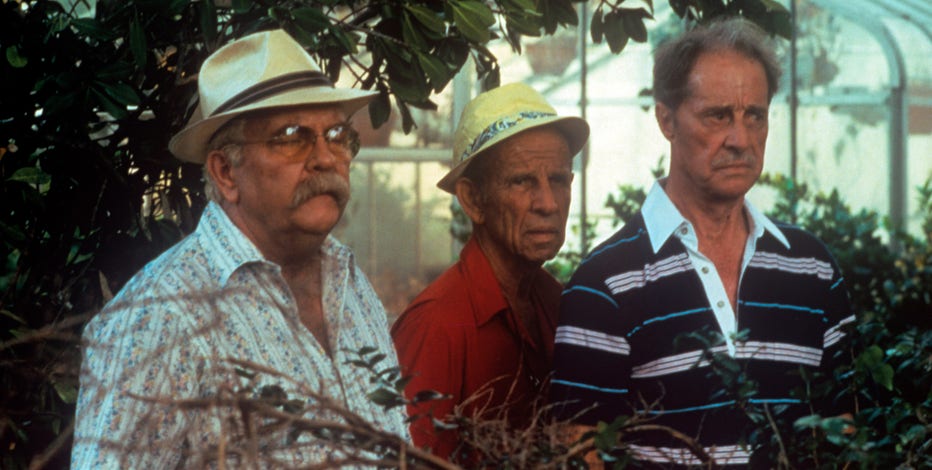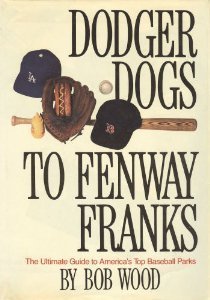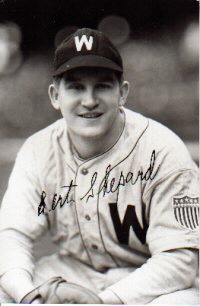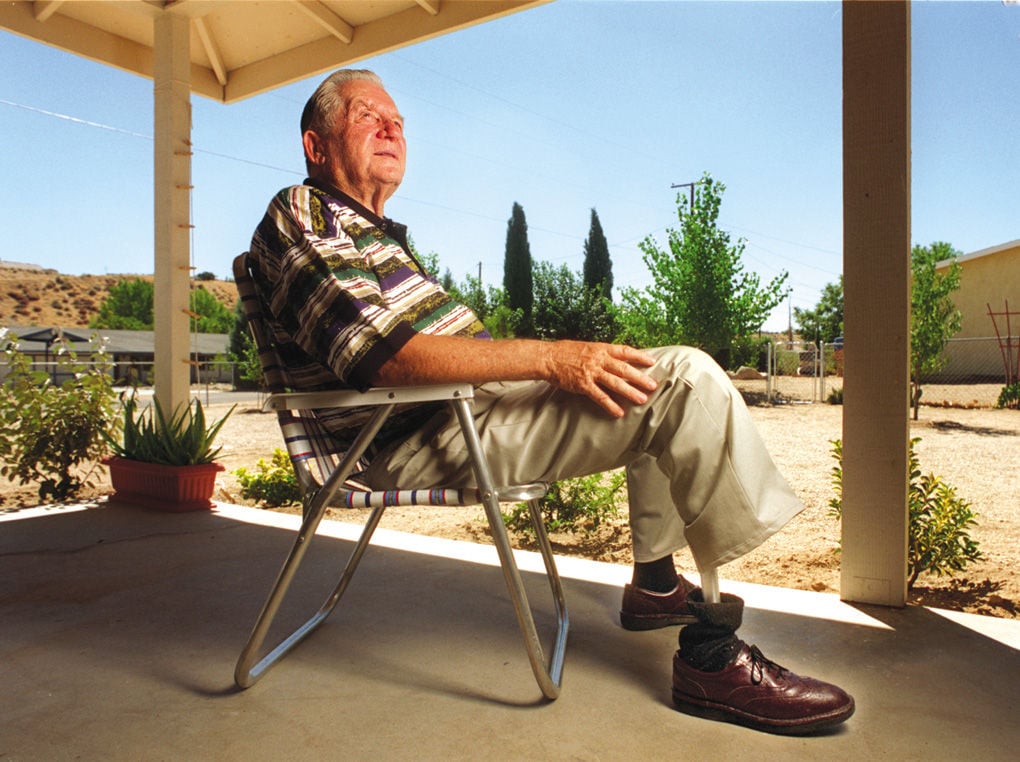Wednesday, August 6, 2025
August 6, 1945: The Atomic Bomb
Tuesday, August 5, 2025
Crossing the Lines
August 5, 1985: The "Dodger Dogs to Fenway Franks" Tour Is Completed
It cost the Yankees the game: Despite 2 home runs by Don Mattingly and another by Dave Winfield, the White Sox won, 6-5 in 11 innings. The winning run was scored by Ozzie Guillén, the ChiSox' shortstop and future manager, a genius/maniac every bit as much as the Yankee manager in this game, Billy Martin (on his 4th go-round). Attendance: 27,118.
Monday, August 4, 2025
Is This Rock Bottom for the Yankees? I Hope So
August 4, 1985: Rizzuto, Seaver & Carew
I was 15 years old, and, with my parents' permission (they, along with my grandmother, would be going with me), I called Ticketmaster the preceding Tuesday, and ordered the tickets, neither knowing nor caring who would be the day's opposing starting pitchers.
The next day, Wednesday, the starters for the Sunday game were announced: Joe Cowley for the Yankees, and Tom Seaver for the White Sox.
At that point, Cowley had 19 career wins, a total that would eventually rise to 33. Seaver had 299 career wins, a total that would eventually rise to 311.
In other words, the man that New York Met fans (for whom he won 199 of his 311) called "Tom Terrific" and "The Franchise" would be going for his 300th win, and I would be there.
Interestingly, while Seaver had made the uniform Number 41 iconic in baseball, Cowley was also wearing it for the Yankees at the time.
The ceremony for Rizzuto was great. Several of his Yankee teammates showed up, including Mickey Mantle and Whitey Ford. This was the first time I'd ever seen either of them in person.
Ex-teammate Yogi Berra was not there, having recently been fired as manager by team executive Clyde King on behalf of team owner George Steinbrenner, and having begun was turned out to be a 14-year boycott of the Yankee organization.
Ex-teammate Joe DiMaggio wasn't there, either. I don't know why. Considering the kind of praise he frequently had for Rizzuto, the only reason I can think of is his egotistical insistence on always being the last man introduced, which wouldn't have happened on another figure's Day.
In reference to two of the Scooter's favorite expressions, one of his gifts was a cow with a papier-mache halo, a "Holy Cow," named "Huckleberry."
That cow, paying no heed to the halo or to Rizzuto being just 5-foot-5 and 150 pounds, or 67 years old for that matter, stepped on his foot, causing him to fall backwards. There was a lot of gasping in The House That Ruth Built. Fortunately, Rizzuto was all right.
And he gave a speech in which he said, "This means more to me than the Hall of Fame ever could." This elicited a big cheer from the Bronx faithful, since he had not yet been elected to the Hall.
But it was a lie, and he knew it. In 1994, 9 years later, he found out just how big a lie it was, as he was finally, rightfully elected, and Yankee Fans everywhere rejoiced that he'd gotten his due while he was still alive.
It was a gorgeous Summer Sunday afternoon: Not too hot, no discernable wind. The field at the old Yankee Stadium was immaculate. Cliché Alert: It was a beautiful day for baseball.
From our box seats in Section 35 in right field -- right around the spot where Roger Maris' 61st home run of 1961 landed (although it was Section 33 in the pre-renovation configuration), we had a decent view. And we were surrounded by other Yankee Fans. This would turn out to be very helpful.
The Yankees still led 1-0 after 5 innings. But the White Sox struck back in the top of the 6th. Cliché Alert: Walks can kill you, especially the leadoff variety. Yankee starter Joe Cowley issued a leadoff walk to, somewhat appropriately, Greg Walker. Longtime Yankee nemesis Carlton Fisk grounded into a force play, getting to 1st as Walker was eliminated by Willie Randolph. But Oscar Gamble singled Fisk over to 3rd.
Billy Martin, in his 4th term as Yankee manager, dismissed Cowley, and brought in Brian Fisher. The Pale Hose hadn't yet scored. Now, they would. Tim Hulett tied the game with a double, bringing home Fisk. Ozzie Guillén, who would later manage the White Sox to a World Series win, gave the South Siders the lead by singling home Gamble. Luis Salazar grounded to short, enabling Andre Robertson to eliminate Guillén, but that left 1st and 3rd with 2 outs. Vance Law drew a walk to load the bases. Little singled home Hulett and Salazar. Harold Baines singled to left, but Dan Pasqua threw Law out at the plate.
As the Scooter would have said, "But the damage is done. I tell ya, Bill White, this is unbelievable." In the space of less than 10 minutes, the Yankees had gone from 1-0 up to 4-1 down, and were very nearly 5-1 down.
Seaver set the Yankees down in order in both the 6th and the 7th. In the 8th, he began to tire, allowing singles to Bobby Meacham and Don Mattingly, but worked out of it. Tony La Russa, noted bullpen tinkerer, was the White Sox manager at the time, but he trusted the veteran from Fresno, California to finish the job he began, and to still be on the mound to accept congratulations on Number 300 after the final out.
If Seaver's milestone had been the whole story, that would be enough of a memory. But it wasn't.
For the out-of-town scoreboard told another story -- and led to another, very shocking story. New York was playing Chicago in the National League as well, the Mets vs. the Chicago Cubs at Wrigley Field. By a wacky turn of events, this one also ended 4-1, in favor of the Mets, who were closer to 1st place at that point in the season than at any time since 1969. (When they won the Pennant in 1973, they were in last place on August 4, before going on a tear.)
And Dwight Gooden, the most heralded Met pitcher since Seaver (the most heralded, and probably even more hyped), went the distance. For some reason, I remembered him striking out 16 Cubs that day. He struck out "only" 6. He did have a 16-strikeout game that season, on August 20, a 3-0 home win over the San Francisco Giants.
This was 1985. It was the peak year of soccer hooliganism in England, including the Millwall-Luton riot in an FA Cup Quarterfinal on March 13, and the Heysel Stadium disaster at the European Cup Final between Liverpool and Italy's Juventus in Brussels, Belgium on May 29, which resulted in English clubs being banned from European play for 5 seasons. (In each case, click on the 1st link for details, and the 2nd link for video.)
When the Mets-Cubs score went up on the out-of-town scoreboard, a "Let's Go Mets" chant went up from the visiting Met fans. After about 10 seconds of shock from the home fans, this blasphemous utterance was followed by a "Mets suck" chant. This was followed by a fight, and I couldn't tell which side started it: The Yankee Fans (indicating an overreaction) or the Met fans (indicating that their blue and orange skins were very thin). Whoever started the fight, it started small, then got bigger. Much bigger.
I've seen Yankees-Red Sox at the old Stadium, the new Stadium, and at Fenway Park. I've been to hockey games at Madison Square Garden, the old Boston Garden and the new Philadelphia arena. But I've never seen as much fighting at a sporting event as I saw that day. There were hundreds of people throwing punches. Most of it, including easily the worst of it (but not all of it), was in the Bleachers, and the proto-Bleacher Creatures were taking no shit from the infiltrating 7 Line Army.
There must have been about 50 people ejected by the Burns security officers. At the time, an English "football" crowd would have called that "just another matchday." An American baseball fan would call it "disgraceful." The game went on, and I have no idea if any of the players involved knew about the fighting.
That brought the tying run to the plate, but it was the pathetic Meacham, then batting an inept .232. Billy knew that he needed baserunners. Surely, he was remembering the play 2 nights earlier, when Meacham got caught between 2nd and 3rd, not knowing if a Henderson fly ball would drop for a hit, which it did, and then stumbling, resulting in himself and Yogi's son Dale Berra both running through 3rd base coach Gene Michael's stop sign, and both being tagged out at the plate by Fisk. So Billy went for broke, sending up Don Baylor to pinch-hit.
Baylor was 36, and wasn't hitting much better, .239, but his OPS was .796, .188 higher than Meacham's. And he did end up with 24 doubles, 23 home runs and 91 RBIs that season. So, on paper, it was a good move. (Cliché Alert: The game isn't played on paper, it's played on grass. Had the game gone to extra innings, Billy probably would have sent Andre Robertson out to play shortstop.)
Seaver was 40, had gone the distance, was in his 2nd straight struggling inning, and had to be gassed at this point. But he reared back, reached into his bag of tricks -- one of the greatest arrays of "stuff" any pitcher has ever had -- fired, and his pitch reached the inside corner, a perfect strike.
But Baylor swung, and connected. In almost any other ballpark -- even the White Sox' home of Comiskey Park, a notoriously poor one for hitters as opposed to its windy, ivy-walled North Side NL counterpart -- this might have been a game-tying home run. But in the old Yankee Stadium, with its left-center "Death Valley," it was just a long fly. Reid Nichols, who had replaced Law in left field for Chicago, caught it. Ballgame over. White Sox win.
All 54,032 in attendance rose as one to applaud Seaver off the field, just as La Russa had intended. Yes, at age 40, he pitched a complete game. Tom Terrific had allowed just 1 run, 6 hits, and just 1 walk. He had notched 7 strikeouts, 1 more than Gooden did that day, and the much-hyped "Doctor K" was, literally, half his age. Truly, we had seen a master of his craft at work.
From Section 35, the last section of box seats in right field, I had a great view of the Bleachers (and the fighting), and, although in the outfield, I had a good view of Seaver and the strike zone. Though I hate to lose and I hate the Mets, all I could do was stand and tip my cap to Seaver. It was the only time I ever saw him pitch live.
As my man Reggie Jackson, who struggled against him in All-Star Games and late in their careers when both were in the AL, but hit an RBI double off him in Game 6 of the 1973 World Series, once said of Tom Seaver, "Blind people come to the park, just to listen to him pitch."
The entire broadcast of the game is available on YouTube, if you're so inclined. Here's the last out.
Speaking of Reggie Jackson, he was present for another big milestone on the same day. He was with the California Angels (now named the Los Angeles Angels of Anaheim), as was another future Hall-of-Famer, Rod Carew. They were playing Carew's former team, the Minnesota Twins, at Anaheim Stadium (now named Angel Stadium of Anaheim).
In the bottom of the 3rd, Carew batted against Frank Viola, and singled. It was his 3,000th career hit. It was his only hit of the day, going 1-for-5.
He was batting just .264 at the time, and retired at the end of the season. It was a far cry from his multiple batting titles in the 1970s, including a run at .400 in 1977, when he ended up at .388, with 14 homers, tying a career high, his only 100-RBI season, a Gold Glove, and the AL Most Valuable Player award, despite the Twins finishing nowhere near the Playoffs.
Carew was a legend, not fully appreciated by Calvin Griffith, the racist cheapskate who inherited the original Washington Senators from his uncle Clark, moved them to Minnesota, and then pissed off fans and players alike. Like Reggie, Rod was welcomed with open arms by "Singing Cowboy" turned media mogul and Angels owner Gene Autry.
When the news of Carew's 3,000th hit went up on the scoreboard at Yankee Stadium, everybody cheered: Yankee Fans, Met fans, and the few White Sox fans in attendance, even though Carew never played for any of them.
Managed by Gene Mauch, The Angels won, 6-5, despite Kirby Puckett's 3 RBIs for Minnesota. Reggie pinch-hit for Dick Schofield in the 8th, and grounded to 1st, resulting in a force play. He was stranded on 1st. Attendance: 41,630 -- far from a sellout, as this was the era (1980 to 1996) when The Big A had a capacity of 65,000, enabling the Los Angeles Rams to play home games there -- but, considering that Carew was on 2,999 hits, and any at-bat could be Number 3,000, a decent crowd.
The Chicago teams? The Cubs, defending NL East Champions, had been slammed by the injury bug, and went from 96 wins to 77, a 19-game drop -- or from 6 1/2 games ahead of the 2nd-place Mets in '84 to 23 1/2 games behind the Cards, their arch-rivals, in '85, by that measure a whopping 30-game slide. The White Sox finished 6 games behind the Royals in the AL West.
There was no Central Division in either League in those days, meaning you had to finish ahead of 6 teams (in the AL) or 5 teams (in the NL) to make the Playoffs, instead of the 3, 4 or 5 you have to top now; and no Wild Card, meaning that, despite 97 wins -- 5 more than they won in their 1996 title season and 10 more than in their 2000 title season -- the Yankees were out of luck. So were the Mets,
If the current setup were in place then, the Yankees would have won the AL Wild Card; while the Cards would have won the NL Central, enabling the Mets to win the NL East.
In the Playoffs, the Royals came from 3 games to 1 down to beat the Jays, the Cards beat the NL West Champion Dodgers, and the Royals came back from 3 games to 2 down to beat the Cards and win an all-Missouri World Series, thanks to a controversial umpiring decision in Game 6 and a Cardinal mental meltdown in Game 7.
1985. A strange year. And nobody was bowling for soup.
Note to fans of that band: George Michael was still in Wham! and hadn't gone into his "Faith" phase yet. And when wasn't Ozzy Osbourne an actor?)
*
One final note. On September 19, 1986, a little more than a year later, the White Sox beat the Angels 7-1 in Anaheim. The ChiSox' pitcher that day pitched a no-hitter, despite walking 7 batters, and allowing a run in the 6th inning, on 3 straight walks and a sacrifice fly by Reggie. The Sox pitcher? None other than Joe Cowley, the man Tom Seaver outpitched to win Number 300.
In the preceding winter, the Yankees had traded Cowley and Hassey to the White Sox for 2 guys who never reached the majors, and Britt Burns, a solid lefty who was supposed to be the 2nd left in the rotation (along with Ron Guidry) that the Yankees so desperately needed, but had a degenerative condition in his hip, and never pitched in the majors again. That was the kind of trade that George Steinbrenner and "my baseball people" made in the 1980s.
And in a fascinating irony, that same day, although no one knew it for sure at the time, Seaver made his last major league appearance. (Appropriately, his age was 41.) The previous June, the White Sox had traded him to the Boston Red Sox, even-up, for outfielder Steve Lyons. That's right: The man today's kids know as baseball pundit "Psycho."
In his last game, Seaver started for the Red Sox against the Blue Jays at Exhibition Stadium. He only went 4 innings, and lost to the Jays, 6-4. Dave Stieb was the winning pitcher. The last batter he ever faced? Tony Fernandez, who flew out to right.
The first batter he ever faced? It was on April 13, 1967, at Shea Stadium, against the Pittsburgh Pirates, and his 1st batter was the dangerous defending NL batting champion, Matty Alou, who doubled to right. But the 22-year-old Seaver stranded him, and the Mets won, 3-2 on an 8th inning single by Chuck Hiller. The opposing pitcher was 1960 Cy Young Award winner Vernon Law.
Attendance: 5,005. It was the 3rd game of the 1967 season, the Mets were still horrible, and while Seaver had been highly-touted, many a highly-touted rookie has failed to pan out. At the time, who knew? Seaver did, however, pan out, and then some.
Moving back to 1986: The Red Sox did not include him on their roster for either the American League Championship Series or the World Series, so the September 19 loss in Toronto was his last major league appearance. But with his Boston teammates, he was introduced at Shea Stadium before Game 1 of the World Series, and appropriately got a thunderous ovation.
And you know what? After September 19, 1986, Cowley, like Seaver, never won another game. He was traded by the White Sox to the Philadelphia Phillies during spring training in 1987, went 0-4 in 5 starts, got send down in early May, went 3-9 in Triple-A, got released, and before turning 29 had thrown his last professional pitch.
Cowley is forgotten today. Seaver is remembered. So is Carew. And so is Rizzuto, who even had Seaver as a WPIX-Channel 11 broadcast partner in his last few years on the air.
Holy Cow.
August 4, 1945: The Bert Shepard Game
Sunday, August 3, 2025
Happy 100th Birthday, Marv Levy
August 3, 1925, 100 years ago: Marvin Daniel Levy is born in
Chicago. In World War II, he was a meteorologist for what was then called the
U.S. Army Air Forces. Given that he ended up coaching in Canada, Kansas City,
Chicago and Buffalo, that may have helped.
He was the head coach at the University of California and the College of William & Mary, leading W&M to the 1966 Southern Conference (not Southeastern Conference) title, before getting his 1st pro coaching job, in 1969, as an assistant with the Philadelphia Eagles. With George Allen’s Washington Redskins, he reached Super Bowl VII in 1973. He led the Montreal Alouettes to the Championship of Canadian football, the Grey Cup, in 1974 and 1977. In 1978, he became head coach of the Kansas City Chiefs. In 1984, he succeeded Allen as head coach of the USFL’s Chicago Blitz.
In 1986, he became head coach of the Buffalo Bills. He led them to 4 straight AFC Championships – but lost all 4 Super Bowls. He went 45-60-5 as a college head coach, 43-31-4 as a pro head coach in Canada, and 143-112 in America.
He grew up a fan of the Chicago Cardinals, the team now known as the Arizona Cardinals, and hates the Chicago Bears, including their theme song, "Bear Down, Chicago Bears." In 1994, after losing to the Bears and hearing that song, he promised his players that if they won their next game, he would write them a fight song. They beat the Miami Dolphins, and he kept his word.
Marv Levy was named to the Pro Football Hall of Fame, the Canadian Football Hall of Fame, and the Bills Wall of Fame. He turns 100 today.

